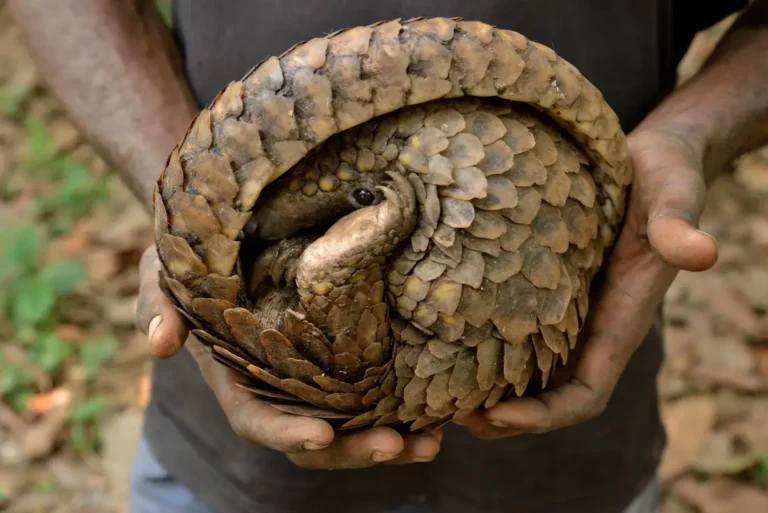Armadillo Facts: Habitat, Behavior, Diet, and Conservation Status
Armadillos are fascinating creatures known for their distinctive armor-like shells. These mammals belong to the order Cingulata and are native to the Americas. Despite their tough exterior, armadillos have a surprisingly diverse array of characteristics and behaviors.
This article delves into the armadillo’s scientific classification, physical characteristics, habitat, behavior, diet, reproduction, predators, conservation status, and more.
Contents
Scientific Classification
- Kingdom: Animalia
- Phylum: Chordata
- Class: Mammalia
- Order: Cingulata
- Family: Dasypodidae
The armadillo family (Dasypodidae) contains about 21 recognized species, with the Nine-banded Armadillo (Dasypus novemcinctus) being the most widespread. Armadillos are closely related to anteaters and sloths, all of the superorder Xenarthra.
Physical Characteristics

Armadillos are characterized by their unique armor-like shell, made of bony plates called osteoderms, covered with a layer of tough skin. This protective armor provides defense against predators. Key physical features include:
- Size: Armadillo species range from 5-59 inches long and weigh between 3 ounces and 120 pounds. The Giant Armadillo is the largest, while the Pink Fairy Armadillo is the smallest.
- Shell: The shell is segmented, allowing flexibility for movement. Some species, like the Three-banded Armadillo, can roll into a ball as a defense mechanism.
- Color: Depending on the species, their color varies from dark brown to pinkish-white.
- Limbs: Armadillos have strong, clawed forelimbs adapted for digging. They are also known for their keen sense of smell, which helps them locate food.
Habitat and Distribution
Armadillos are primarily found in the Americas, from the southern United States to South America. Their habitats include:
- Grasslands and Open Plains: Ideal for digging and finding food.
- Rainforests: Home to species like the Nine-banded Armadillo, which thrives in moist, dense environments.
- Deserts and Scrublands: Certain species have adapted to arid conditions.
Armadillos are highly adaptable and can survive in various climates, but they generally prefer warm environments due to their low body fat and poor ability to regulate temperature.
Behavior and Lifestyle

Armadillos are primarily solitary and nocturnal creatures, although some may be active during the day, especially in cooler weather. Their behaviors include:
- Burrowing: Armadillos are expert diggers, creating extensive burrow systems that serve as homes and shelters. They can dig up to 15 burrows within their territory.
- Foraging: They forage primarily at night, using their strong sense of smell to locate food.
- Swimming: Armadillos are surprisingly good swimmers. They can hold their breath for up to six minutes and even inflate their intestines to float.
Diet and Feeding Habits
Armadillos are omnivores, with a diet primarily consisting of insects, grubs, and other invertebrates. Key components of their diet include:
- Insects: Ants, termites, and beetles are familiar food sources.
- Small Vertebrates: Occasionally, they may eat small amphibians or reptiles.
- Fruits and Vegetation: Some armadillo species consume fruits, seeds, and roots.
They use their long, sticky tongues to extract insects from narrow spaces like anteaters.
Reproduction and Life Cycle
Armadillo reproduction is unique among mammals:
- Breeding Season: Typically occurs once a year. For most species, this is between July and August.
- Gestation: The gestation period is about 120 days for most armadillos. However, the Nine-banded Armadillo has a unique trait of delayed implantation, meaning the fertilized egg does not immediately implant in the uterus.
- Offspring: Armadillos generally give birth to identical quadruplets. The young are born with soft, leathery skin that hardens as they mature.
The lifespan of an armadillo in the wild ranges from 4 to 16 years, depending on the species and environmental conditions.
Predators and Threats
While the armor provides good defense, armadillos have several natural predators, including:
- Coyotes, Jaguars, and Wild Cats: These predators can often overcome armadillos.
- Birds of Prey: Large birds, such as hawks and eagles, may prey on young armadillos.
- Humans: In some regions, armadillos are hunted for food or sport.
Aside from predators, armadillos face threats from habitat destruction and vehicle collisions.
Conservation Status
The conservation status of armadillo species varies:
- Most minor Concern: Many armadillo species, such as the Nine-banded Armadillo, are classified as “Least Concern” by the IUCN.
- Threatened or Endangered: Some species, like the Giant Armadillo and Brazilian Three-banded Armadillo, are considered vulnerable due to habitat loss, hunting, and fragmentation.
Conservation efforts focus on habitat protection and minimizing human-wildlife conflict.
Interesting Facts about Armadillos
- Leprosy Carriers: The Nine-banded Armadillo is known to carry Mycobacterium leprae, the bacterium that causes leprosy, making them unique among wild mammals.
- Armor Flexibility: Only the Three-banded Armadillo can roll into a ball for complete protection; other species rely on their digging abilities and burrows for safety.
- Jump Reflex: When startled, armadillos can jump 3-4 feet vertically in the air, which unfortunately makes them vulnerable to road accidents.
Evolutionary History
Armadillos belong to the superorder Xenarthra, which also includes anteaters and sloths. Fossil records suggest that armadillos have been around for about 55 million years. They evolved to develop their armored shells as a defense mechanism against predators. One of their ancient relatives, the Glyptodon, was a giant armadillo-like creature the size of a small car.
Armadillos and Humans
Armadillos have a complex relationship with humans:
- In Folklore: In various cultures, armadillos symbolize perseverance and defense.
- In Agriculture: Armadillos can be considered pests when they dig up gardens, lawns, or farmland.
- In Research: Armadillos are studied in medical research due to their unique reproductive system and susceptibility to leprosy.
Conclusion
Armadillos are remarkable creatures with a rich evolutionary history and diverse adaptations. Their unique armor, burrowing behavior, and role in various ecosystems make them an important species to study and conserve. Understanding armadillos better helps us appreciate the complex web of life in which these armored mammals play a part.
- Golden Retriever Pros and Cons: What Every Pet Parent Should Know - 15 September 2025
- Cane Corso Dog Breed: Health, Care, and Lifespan - 14 September 2025
- Catahoula Leopard Dogs: Description, Temperament, Lifespan, & Facts - 21 July 2025







